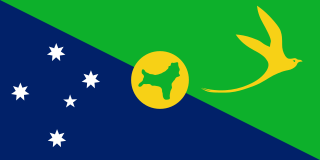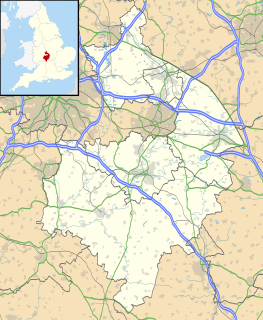| No. 1321 Flight | |
|---|---|
Vickers Valiant B.1 WP201, of No. 1321 Flight RAF. | |
| Active | 1 Sep 1944 – 1 Nov 1944 3 Aug 1954 – 15 Mar 1956 1 Oct 1957 – 31 Mar 1958 |
| Country | |
| Branch | |
| Role | Fighter affiliation Nuclear Weapons trials Electronic countermeasures (ECM) |
| Aircraft flown | |
| Bomber | Vickers Valiant B.1 Avro Lincoln B.2 English Electric Canberra B.2 |
| Fighter | Hawker Hurricane Mk.IIc |
No. 1321 Bomber (Defence) Training Flight RAF was first formed at RAF Bottesford on 1 September 1944 [1] as a fighter affiliation unit to train bomber crews from No. 5 Group Bomber Command how to defend their aircraft. The Flight was disbanded two months later on 1 November 1944 [2] and absorbed by the units they trained before, 1668 Heavy Conversion Unit and 1669 Heavy Conversion Unit. [1]

Royal Air Force Bottesford or more simply RAF Bottesford is a former Royal Air Force station located on the Leicestershire-Lincolnshire county border, 6.8 miles (10.9 km) north west of Grantham, Lincolnshire and 7.6 miles (12.2 km) south of Newark-on-Trent, Nottinghamshire and about 107 miles (172 km) north-northwest of London, England.
Contents
No. 1321 (Valiant/Blue Danube Trials) Flight RAF was reformed at RAF Wittering on 3 August 1954 [1] [2] as a Vickers Valiant unit to integrate the Blue Danube nuclear weapon into Royal Air Force service. It was commanded by Squadron Leader D. Roberts, formerly commanding officer of No. 617 Squadron. Squadron Leader Roberts had earlier reported to Wisley Airfield, the Vickers-Armstrongs flight test airfield in Surrey, expecting to take a three-week conversion course to the Valiant. Instead he remained there for 15 months until he reported to Wittering to command 1321 Flight. 1321 Flight's first aircraft was Valiant WP201. Roberts and his crew flew it from Wisley to Wittering on 15 June 1955 to begin an intensive program of integration tests. The tests had two main separate components:

Royal Air Force Station Wittering or more simply RAF Wittering is a Royal Air Force station within the unitary authority area of Peterborough, Cambridgeshire and the district of East Northamptonshire. Although Stamford in Lincolnshire is the nearest town, the runways of RAF Wittering cross the boundary between Cambridgeshire and Northamptonshire.

The Vickers-Armstrongs Valiant is a British quadjet high-altitude bomber, and was part of the Royal Air Force's V bomber nuclear force in the 1950s and 1960s. It was developed by Vickers in response to Specification B.35/46 issued by the Air Ministry for a nuclear-armed jet-powered bomber. The Valiant was the first of the V bombers to become operational, and was followed by the Handley Page Victor and the Avro Vulcan, which were more advanced. The Valiant has the distinction of being the only V bomber to have dropped live nuclear weapons.

Blue Danube was the first operational British nuclear weapon. It also went by a variety of other names, including Smallboy, the Mk.1 Atom Bomb, Special Bomb and OR.1001, a reference to the Operational Requirement it was built to fill.
- Ballistic performance of the bomb casing at various altitudes and speeds
- Testing of the equipment from the Atomic Weapons Research Establishment under operational conditions
A variety of BTV (Ballistic Test Vehicle) drops were carried out at various heights and speeds at the experimental Bombing Range on Orfordness. The ballistic performance of the weapon was found to be so good that there was a risk of it not leaving the slipstream of the bomber and consequently flying along with the aircraft. Retractable spoilers were fitted to the underside of the fuselage, just forward of the bomb bay in order to induce turbulence within the bomb bay enabling the bomb to fall away. All the live nuclear weapons dropped at Maralinga (Australia) and Christmas Island (Pacific Ocean) were assembled, pre-drop tested and loaded on to specially prepared Valiant bombers of 49 Squadron and 138 Squadron by the small team of technical specialists from 1321 Flight. The life of 1321 (Valiant/Blue Danube Trials) Flight came to an end on 15 March 1956 [1] [2] when it became 'C' Flight of No. 138 Squadron, the first regular Valiant unit.

Maralinga in the remote western areas of South Australia was the home of the Maralinga Tjarutja, a southern Pitjantjatjara Indigenous Australian people. Maralinga was the site of the British nuclear tests in the 1950s. The site measures about 3,300 km² in area.

The Territory of Christmas Island is an Australian external territory comprising the island of the same name. Christmas Island is located in the Indian Ocean, around 350 kilometres (220 mi) south of Java and Sumatra and around 1,550 kilometres (960 mi) north-west of the closest point on the Australian mainland. It has an area of 135 square kilometres (52 sq mi).

No. 49 Squadron was a bomber squadron of the Royal Air Force from 1938 to 1965. They were the first squadron to receive the Hampden in September 1938.
The flight was reformed, once again, by the merger of the Avro Lincoln element of 199 Squadron, called Arrow Squadron and Antler Squadron, to become No. 1321 (ECM) Flight RAF at RAF Hemswell on 1 October 1957, disbanding on 31 March 1958 and absorbed by the Bomber Command Bombing School. [1]

The Avro Type 694, better known as the Avro Lincoln, is a British four-engined heavy bomber, which first flew on 9 June 1944. Developed from the Avro Lancaster, the first Lincoln variants were initially known as the Lancaster IV and V, these were renamed Lincoln I and II. It was the last piston-engined bomber operated by the Royal Air Force (RAF).
No. 199 Squadron was a Royal Air Force aircraft squadron that operated during the Second World War and later in the 1950s as a radar countermeasures squadron.

Royal Air Force Station Hemswell or more simply RAF Hemswell is a former Royal Air Force station located 7.8 miles (12.6 km) east of Gainsborough, Lincolnshire, England.







